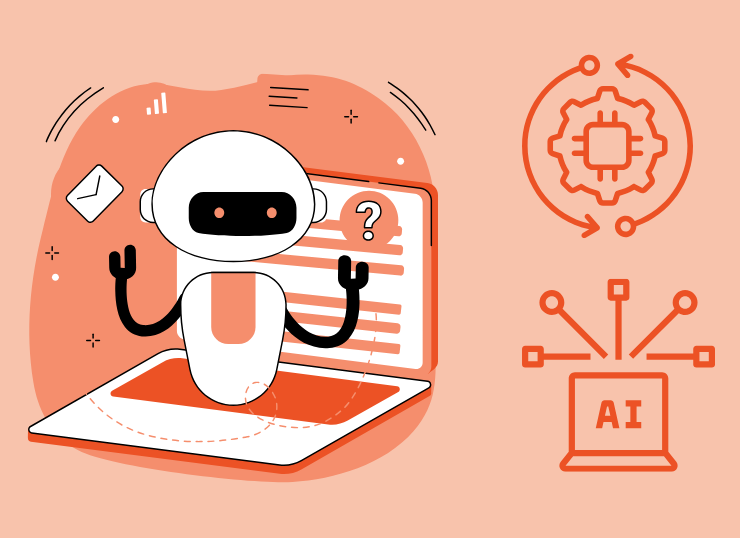AI and User Experience: Learning Through Smarter Interactions
In the modern digital era, User Experience (UX) has become one of the most decisive factors for the success of any online platform. Whether it is a website, mobile app, or customer support channel, the way users interact with technology influences engagement, satisfaction, and conversions. With the rise of Artificial Intelligence (AI), we are witnessing a paradigm shift in UX design and development. From predictive analytics to machine learning-driven personalization, AI is not only enhancing usability but also redefining how businesses understand and interact with their audiences.
This blog explores how AI is shaping user experience, the role of smarter interactions, and what future businesses can expect as technology continues to evolve.

Want to Skyrocket Your Sales Online? Choose The Top Digital Marketing Agency!
Accelerate your online venture with Gandhi Technoweb Solutions’ extraordinary digital marketing experts! Harness superior digital marketing tactics tailored to fit your budget seamlessly.
The Evolution of User Experience in the Age of AI
Traditionally, UX design relied on static interfaces, usability testing, and manual insights derived from user behavior. While these methods were effective, they often lacked real-time adaptability. Enter AI-powered systems that can process vast amounts of data, identify user intent, and deliver dynamic experiences tailored to each individual.
For example, consider how AI recommendation engines like those used by Netflix or Amazon adapt instantly based on your behavior. Instead of generic navigation, users now get personalized content suggestions, predictive search, and adaptive layouts that evolve with continuous interaction.
In short, AI transforms UX from a one-size-fits-all model into a fluid, context-aware system that continuously learns and improves.
Key AI Technologies Driving Smarter Interactions
The fusion of AI and UX design is powered by several core technologies. These innovations allow businesses to provide seamless, human-like, and context-driven interactions.
1. Natural Language Processing (NLP)
NLP enables systems to understand and respond to human language in real time. From AI chatbots to voice assistants, NLP bridges the communication gap between users and machines. Instead of clicking through menus, users can now type or speak naturally to get solutions instantly.
2. Machine Learning (ML)
ML algorithms analyze behavioral patterns to anticipate what users want. For instance, an e-commerce site can predict the next likely purchase and showcase it proactively. This predictive capability improves navigation, reduces friction, and makes experiences feel intuitive.
3. Computer Vision
For platforms where visuals dominate, computer vision helps identify objects, analyze images, and enhance accessibility. Mobile banking apps, for example, use vision-based AI verification systems to authenticate users securely with face recognition.
4. Predictive Analytics
By processing user data in real time, predictive analytics helps businesses anticipate needs. Streaming platforms recommending shows before you search or ride-sharing apps predicting your usual routes are prime examples of this technology at work.
5. Reinforcement Learning
This advanced form of AI learning allows systems to continuously refine outcomes based on feedback loops. It is particularly useful in adaptive UX design, where interfaces learn from user satisfaction scores and modify their behavior for future interactions.
How AI Enhances User Experience?
The integration of AI-driven systems brings tangible improvements to user experience. Some of the most impactful enhancements include:
1. Personalization at Scale
Unlike traditional personalization, where segmentation was broad and generic, AI-powered personalization is hyper-targeted. Every user sees tailored content, recommendations, and workflows based on real-time behavior and past interactions.
2. Conversational Interfaces
AI chatbots and virtual assistants are revolutionizing customer engagement. By using NLP and sentiment analysis, they offer contextual responses, reducing the need for human intervention and improving service speed.
3. Accessibility Improvements
Through voice recognition and computer vision, AI helps make digital platforms more accessible for users with disabilities. For instance, screen readers powered by AI can describe images in detail for visually impaired users.
4. Error Reduction and Predictive Assistance
AI predictive systems minimize friction by identifying errors before they happen. Smart form-filling suggestions, grammar correction, and predictive text all streamline the process, ensuring smoother interactions.
5. Emotional Intelligence
The rise of affective computing allows AI to recognize emotions based on tone, facial expression, and sentiment. By identifying user frustration, platforms can adapt experiences to ease the journey, ensuring higher engagement and satisfaction.
Challenges in AI-Driven UX
While AI technologies bring groundbreaking improvements, businesses must also recognize the challenges associated with their implementation.
- Data Privacy Concerns – AI thrives on data, and collecting behavioral insights at scale raises privacy and compliance issues.
- Over-Automation – Too much reliance on AI chatbots or automated systems can frustrate users who seek human interaction.
- Bias in Machine Learning Models – Poorly trained ML models can result in biased decisions that negatively affect user trust.
- Complexity in Design – Integrating AI systems requires technical expertise, which can complicate development cycles and increase costs.
Overcoming these challenges requires a balanced approach where AI supports, but does not completely replace, the human element in user experience.
Future of AI in User Experience
The future of AI-driven UX lies in deeper personalization, more intuitive interfaces, and highly adaptive ecosystems. Some emerging trends include:
- Zero UI – Interfaces without buttons or screens, powered entirely by voice and gestures.
- Predictive UX – Experiences that evolve dynamically based on contextual data.
- Augmented Reality (AR) and AI Integration – Creating immersive digital experiences that blend virtual and real worlds.
- Emotionally Responsive Systems – Platforms that adapt tone, visuals, and flow based on real-time emotional analysis.
As these technologies advance, businesses that leverage them effectively will set the standard for digital interaction in the coming decade.

Looking to Rule Local Search Results? Harness the Power of Our Proven SEO Strategies!
Increase footfall and grow your customer base with our specialized local SEO services, tailored to meet the unique needs of your business.
Conclusion
The role of AI in User Experience is no longer optional; it is a necessity. From NLP-driven conversational interfaces to machine learning-powered personalization, AI ensures that every interaction is smoother, smarter, and more human-like. Businesses that adapt to this shift will not only deliver superior digital experiences but also build stronger trust and engagement with their audiences.
By adopting AI-powered UX strategies, companies position themselves at the forefront of innovation—where user needs are anticipated, interactions are effortless, and customer satisfaction becomes the ultimate differentiator.
Free SEO Audit Offer
Want to know how your website can benefit from AI-driven digital strategies? Get a Free SEO Audit from Gandhi Technoweb Solutions and discover hidden opportunities to improve your online visibility, rankings, and conversions.









